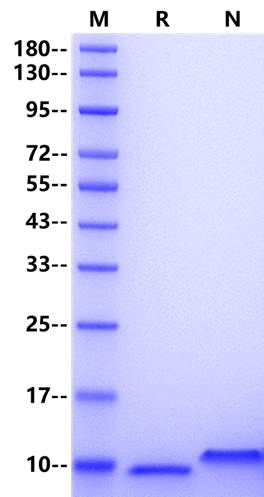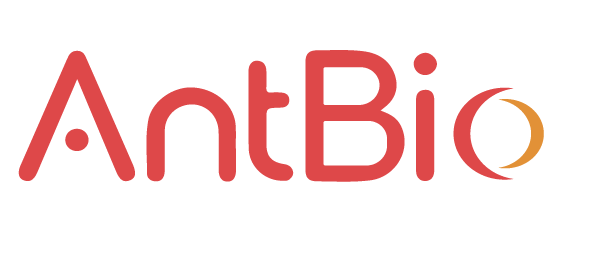2μg (R: reducing condition, N: non-reducing
condition).
Product Details
Product Details
Product Specification
| Species | Human |
| Synonyms | PPBP, B-TG1, Beta-TG, CTAP-III, CTAP3, CTAPIII, CXCL-7, LA-PF4, LDGF, MDGF, NAP2, PBP, SCYB7, TC1, TC2, TGB, TGB1, THBGB, THBGB1, pro-platelet basic protein |
| Accession | P02775 |
| Amino Acid Sequence | Ala59-Asp128 |
| Expression System | E.coli |
| Molecular Weight | 9kDa (Reducing) |
| Purity | >95% by SDS-PAGE |
| Endotoxin | <0.1EU/μg |
| Conjugation | Unconjugated |
| Tag | No Tag |
| Physical Appearance | Lyophilized powder |
| Storage Buffer | 20mM Tris, 300mM NaCl, pH8.0 |
| Reconstitution | Reconstitute at 0.1-1 mg/ml according to the size in ultrapure water after rapid centrifugation. |
| Stability & Storage | · 12 months from date of receipt, lyophilized powder stored at -20 to -80℃. · 3 months, -20 to -80℃ under sterile conditions after reconstitution. · 1 week, 2 to 8℃ under sterile conditions after reconstitution. · Please avoid repeated freeze-thaw cycles. |
| Reference |
Wang YH, Shen CY, Lin SC, Kuo WH, Kuo YT, Hsu
YL, Wang WC, Lin KT, Wang LH. Monocytes secrete CXCL7 to promote breast cancer
progression. Cell Death Dis. 2021 Nov 17;12(12):1090. doi:
10.1038/s41419-021-04231-4. PMID: 34789744; PMCID: PMC8599470.
|
Background
Neutrophil
Activating Peptide 2 (NAP-2), also known as CXCL7, is a platelet-derived
growth factor that belongs to the CXC chemokine family. This growth factor is
a potent chemoattractant and activator of neutrophils. Recently, it has been
shown that CXCL7 is secreted by tumor infiltrating monocytes, to stimulate
cancer cell migration, invasion, and metastasis, contributing to the
promotion of breast cancer progression. It also stimulates the formation and
secretion of plasminogen activator by synovial cells. The protein also is an
antimicrobial protein with bactericidal and antifungal activity.
Picture
Picture
SDS-PAGE



